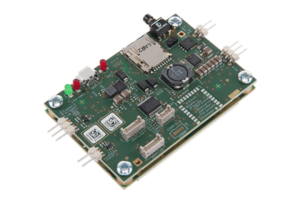 Septentrio has announced the arrival of the company’s new AsteRx-m2a and AsteRx-m2a UAS GNSS OEM engines, which will be showcased at the Commercial UAV Expo in Las Vegas, Nevada.
Septentrio has announced the arrival of the company’s new AsteRx-m2a and AsteRx-m2a UAS GNSS OEM engines, which will be showcased at the Commercial UAV Expo in Las Vegas, Nevada.
These two new OEM boards have been developed with state-of-the-art precise and reliable multi-frequency, all-in-view RTK positioning and heading, along with high-level interference technology and low power consumption.
The AsteRx-m2a and AsteRx-m2a UAS are both smaller than a credit card and feature Septentrio’s AIM+ interference mitigation and monitoring system. AIM+ can suppress the widest variety of interferers, from simple continuous narrowband signals to the most complex wideband and pulsed jammers. Increasing levels of radio-frequency pollution coupled with the intrinsic danger of self-interference in compact systems such as UAS (unmanned aircraft systems), makes interference mitigation a vital element in any UAS that uses GNSS positioning.
Both boards are designed to bring high-precision positioning and attitude to any space-constrained application. The focus on ease-of-integration along with high-update rate, low-latency output makes both receivers ideal core components in any multi-sensor application. AsteRx-m2a UAS is aimed specifically at unmanned applications, bringing plug-and-play compatibility for autopilot systems such as ArduPilot and Pixhawk. Event markers accurately synchronise camera shutter events with GNSS time and the board can be powered directly from the vehicle power bus via its wide-range input. The AsteRx-m2a UAS works seamlessly with GeoTagZ Software providing offline re-processed RTK accuracy without the need for either Ground Control Points or a real-time datalink.
“We’ve taken the hugely successful AsteRx-m2 and added a second antenna input for high-precision GNSS heading. No need to manoeuvre around in a figure of ‘8’ trying to initialise INS heading or find space or additional power for a separate INS module now, all you need is a second antenna,” stated Gustavo Lopez, OEM Product Manager at Septentrio.


















